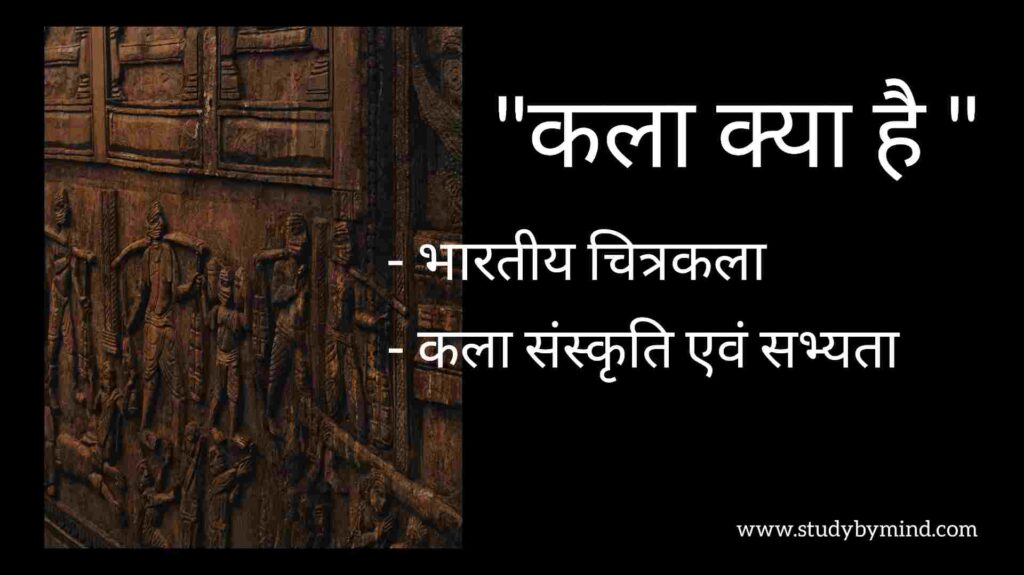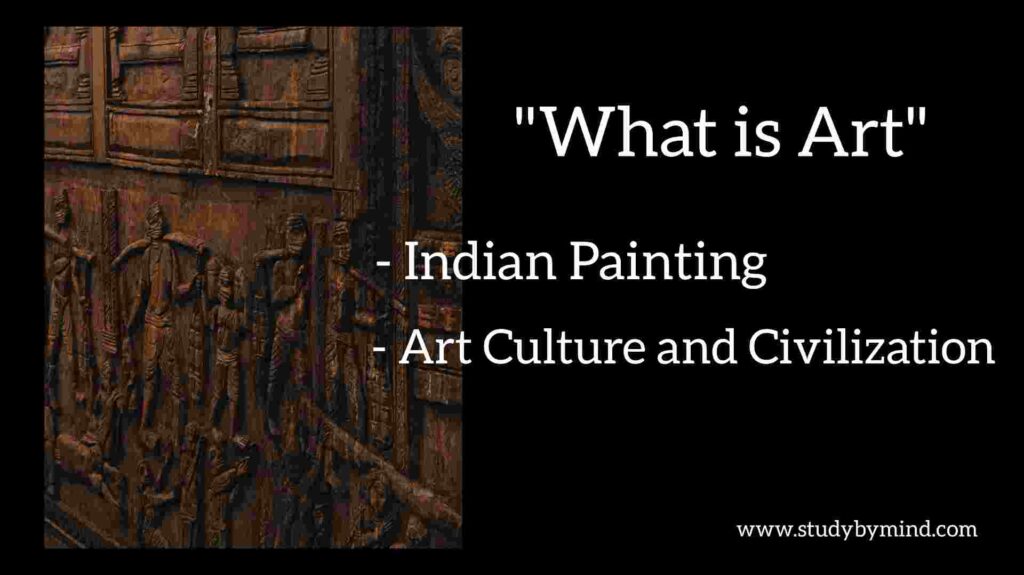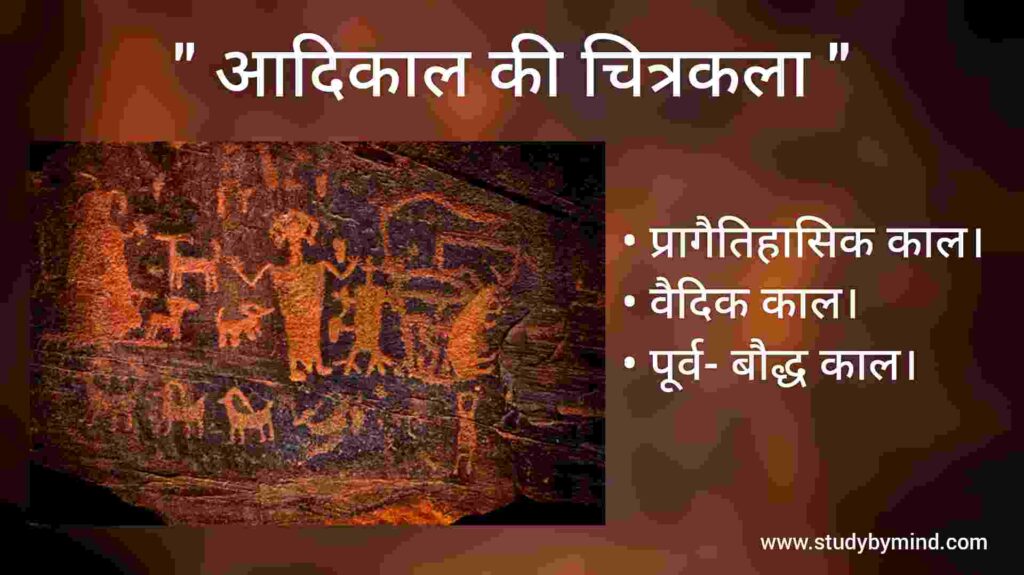Art of the Indus Valley Civilization (from 3500 BC to 2500 BC)
A civilization was born from China to Central Asia and in India between 4000 BC to 3,000 BC. Indus Valley Civilization Art History – Painting – The credit for the discovery of this civilization goes to Sir John Marshall and Dr. Ernest Menk. He had made the world aware of this civilization in the year 1924. And in this vast area, there was a special development of the art of making red and black pottery. These utensils were decorated with motifs of animal, bird figures, human figures and geometrical shapes. And the Department of Archeology has also called this civilization by the name of the civilization of the mortals. In India and Pakistan, this type of material has been found after excavation in places named Mohenjodaro, Harappa, Chanuddo, Jhangar, Jhukar, Kulli, and Lothal.
सिंधु घाटी सभ्यता की कला – चित्रकला – ” Click here “

The Department of Archeology at that time in the Indus Valley region in 1922 AD, the late R. The excavation work was started under the chairmanship of D.Banerjee and in the excavations of Mohenjodaro in Lakhna district and Harappa between Lahore and Multan, the remains of a developed civilization were found, and again the knowledge of a similar civilization called Lothal of Kathiawar region. Location: In 1954 AD under Sargawala village of district Ahmedabad, S.R. It has been obtained from the archaeological departmental excavation work conducted under the chairmanship of Rao. Remains of this type of civilization have also been found in Chanudaro.
The prosperity of the Indus region was maintained till the Persian emperor Achheyanid (5th CE BC). Alexander the Great had also found this part green while invading India. The solid and high foundations of the building remains here are proof that the fear of being damaged by the floods of the Indus river in the area was constant. In Rajasthan, in the excavations of Piliwangan and Kalivangan, many characters have also been found as evidence of similar ancient civilization.
Time Division
Prehistoric farming castes throughout India extend from 4000 BC to Sindh in northern Balochistan. It had settled. These farming castes used to make black and red earthen pots. All these utensils were decorated with simple and easy colored drawings. And the painting of all these writings is of primitive style. The remains of philosophical arts have not been found in the excavation of the sites of the early agricultural civilization. Signs of agricultural civilization have been found in this area at various places. This civilization had developed in several stages. The evidence of which has been obtained from the excavation of many ground floors, and whose period can be divided as follows. The best fully developed form of this civilization has been obtained from the excavation done from many places on the banks of the river Indus. For this reason this civilization has also been called as Indus Valley civilization.
- Pre-pottery civilization (whose period and form are uncertain)
- Cueta civilization (3500 BC to 3000 BC)
- Zhob Civilization (4000 BC to 2500 BC )
- Kulli Mehi Civilization ( 2800 BC) . 2000 BC )
- Harappan Civilization ( 2700 BC to 2000 BC)
- Harappan – Mohenjodaro and Lothal Civilization ( 2200 BC 1800 BC)
- Jhungar and Jhangar civilization (1500 BC)
All the above civilizations have been named at the places where signs of these civilizations have been found. Interesting artistic material has also been found in the excavation of all these places. On the basis of which the painting of this period can be estimated.

The Art of Cuyeta Civilization
In this civilization, Sir Aurail Stin had found some cooked clay heads in the excavations of Waziristan and northern Balochistan in the Kuyeta region. Between 1950 and 1951, again a collective team of the US Archaeological Department and the Pakistani Archaeological Department, Kuytapishin and Zhob Lorelai went to the area. For this team, Kuytapishin went to Tathzob Lorelai area to study this civilization. They got enough art material related to this civilization. Here in the upper floor, such idols were found which is different from Zhob idols. And in which cone-shaped embellishments have been made on the forehead. The heads of the idols are painted black and a simple tyara (makeup bandage) has been made on the head.
Amri Nundranal Art of Civilization
Amri, Ghajishah, Pindi, Wahi, Lohri and Shahsan excavations have also yielded fragments of ornaments.
The Art of Zob Civilization
The pottery found in the valley of the Jhob river in northern Balochistan is of deep purple-red colour, many sculptures of clay baked in Zhob have been found. The earliest examples of national art of India are found in the form of these sculptures. Small death statues of animals and women have also been found here. Sculptures of humpback bulls found at many places under the Jhob region are prominent. But these idols are few in number. The idols of bulls found here are similar to those of bulls found in Kulli. In their physical formation More effort has also been made to bring musculature and formability. The idol of a headless bull is 8 inches tall from the obverse to the tail. Its legs are very short but its structure has formability. The healthy physical formation of this idol appears satisfactory enough.
The Art of Kulli Mehi Civilization
Signs of the contemporary civilization of Zhob have also been found in the area adjacent to the ocean in Makran. Many sculptures of animals and women have been found in Kulli area, which are of the same type. The figures of the humpback bulls of Kulli are not attractive, because the colors of their bodies, painted with colors by stripes, have become pale and blurred. And the eyes of these bulls and the lower part and neck of the horns were also decorated with colored stripes. And these colorful animal sculptures are reminiscent of the figures of bulls inscribed on the utensils of Nundranal.
The Art of Mohenjodaro Civilization
Remains of mausoleums, ponds, baths and two-storey houses have been found in Mohenjodaro. This city was built in a planned manner. And deep drains and lighthouses were also built on either side of the straight roads. The prosperity of this city depended only on agriculture and trade. In Mohenjodaro, pieces of cotton cloth, looms, ornaments such as necklaces, rings, rings, baked clay, bronze and copper were made. Here, among the killers of war, arrows, spears, axes, knives, knives, chisels, razors etc. have also been found, which are made of bronze and copper. And the pieces made by baking clay have also been found here. On which many types of pictures have been made. For example, along with the figures of animals like buffalo, sheep, rhinoceros, Taurus, pig etc., script marks have also been marked.
Art of Harappan Civilization
The three millennium old planned city found in the excavation of Harappa, grain stores, the remains of the bathhouse and other materials were also found. It is similar to all the material obtained from Mohenjodaro. A human torso sculpture made of red stone has been found in Harappa, which is 3.3/4 inches high. It is also a matter of surprise to art critics. This talent is kept safe in the National Museum, New Delhi. Its construction time is 2500 BC. to 2000 BC Looks in the middle.
Art of Jhunkar and Jhangar Civilization
Remnants of Jhunkar civilization have been found 80 miles south of Mohenjodaro at Chanuddo in Sindh under Nawabshah district. Many clay idols have been found here. The introduction of these remains was first done in 1932 AD by Shri N. Yes. Majumdar had got it done by archaeologists. Later another caste started living at this place. Which used to make brown earthen pots. The civilization of this caste has been called by the name of Jhangar civilization. Many interesting sculptures of baked clay have been found in Jhangar, from which it appears that the people living in different areas of the Indus river valley had developed a private civilization.
FAQ
Q. When did the Indus Valley Civilization start?
A. Art of the Indus Valley Civilization (3500 BC to 2500 BC)
Q. What are the best works of Harappan civilization?
A. In the excavation of Harappa, the three thousand-year-old planned city was found, in which grain stores, the remains of the bathhouse and other materials were also found. It is similar to all the material obtained from Mohenjodaro. An idol of a human torso made of red stone has been found in Harappa.
Q. Who was the discoverer of Indus Valley Civilization?
A. The credit for the discovery of civilization goes to Sir John Marshall and Dr. Ernest Menk. He had made the world aware of this civilization in the year 1924.
Q. Which is the largest civilization in the world?
A. It is believed to be the Indus Valley Civilization.
Q. What is the art of Mohenjodaro civilization?
A. Remains of tombs, ponds, baths and two-storey houses have been found in Mohenjodaro. This city was built in a planned manner. And deep drains and lighthouses were also built on either side of the straight roads. The prosperity of this city depended only on agriculture and trade. In Mohenjodaro, pieces of cotton cloth, looms, ornaments such as necklaces, rings, rings, baked clay, bronze and copper were made.
Q. What is the art of the Cueta civilization?
A. Here in the top floor such idols were found which is different from the Jhob idols. And in which cone-shaped embellishments have been made on the forehead. The heads of the idols are painted black and a simple type of tiara (makeup bandage) has been made on the head.
Q. What are the art of Jhunkar and Jhangar civilization?
A. The remains of Jhunkar civilization have been found 80 miles south of Mohenjodaro at Chanuddo in Sindh under Nawabshah district. Many clay idols have been found here. The introduction of these remains was first done in 1932 AD by Shri N. Yes. Majumdar had got it done by archaeologists.
See These Also
- Indus Valley Civilization – ” Click here “
- Jogimara Caves and Painting History – ” Click here “
- Art and Civilization of the Pre-Buddhist Period – ” Click here “


